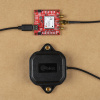Analyzing voltage and current in a circuit is a great place to start to understand what that circuit is doing. In this episode of "Adventures in Science," we introduce the resistor and use it to help demonstrate Ohm's Law.
This interesting law of physics was named after Georg Ohm, and states that the current between two points is directly proportional to the voltage across those two points:
With a little bit of algebra, we can move the variables around and arrive at the more memorable:
In the video, we demonstrate voltage and current in a fluid-based circuit, and show how a resistor acts like a piece of steel wool used to restrict the flow of water. We also construct a real circuit using a resistor, measure the voltage and current, and then calculate the resistance using Ohm's Law.
The information in the video was inspired by the following tutorials:
Voltage, Current, Resistance, and Ohm's Law
Learn about Ohm's Law, one of the most fundamental equations in all electrical engineering.
Resistors
A tutorial on all things resistors. What is a resistor, how do they behave in parallel/series, decoding the resistor color codes, and resistor applications.
How to Use a Multimeter
Learn the basics of using a multimeter to measure continuity, voltage, resistance and current.
I've gotten some good feedback on the previous tutorials, so thank you to everyone who commented! For this video, I put the "intuitive" demo first before touching any math, so hopefully that helps to make things clearer for students. What can be improved for episode 4?
Interested in learning more foundational topics?
See our Engineering Essentials page for a full list of cornerstone topics surrounding electrical engineering.










